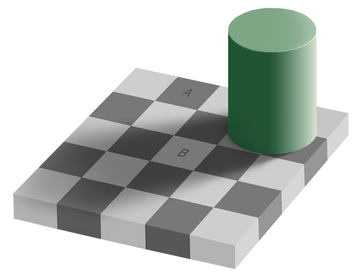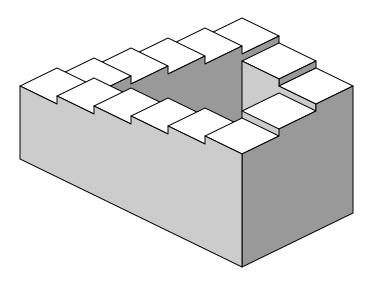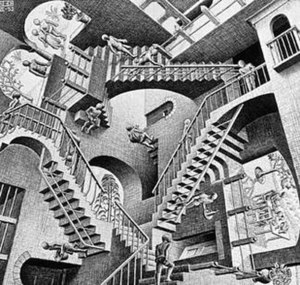Optical Illusions
What comes in your mind if that is being asked to you?
Look at this picture. Do the lines seem parallel?

Well, check with a ruler- because they are!
An optical illusion is a trick played on the mind using an image that is visually perceived in a way that's different from what it is in objective reality. It uses the fact that our brains interpret and process information from the eye and makes unconscious inferences without you realizing it.
For example, read this fast- can you undrestnad waht this setnenece maeans? Yes, quite easily, because your brain infers the meaning of words based on only a few letter seen by your eyes.
There are various different types of such cognitive illusions:
1. Ambiguous illusions: | Consider the Necker cube. Which side is the front of the cube- the lower left, or the upper right? This type of illusion presents you with 2 different interpretations, both correct. Most often you'll only see one, but after thinking about it you'll begin to recognize the other. This is because the brain relies on classifying images by their surroundings, but once it becomes ambiguous as to which is the object and which is the surroundings, things become weird. Here's another example- Rubin's vase: |  |
Is this a vase, or two people in profile?
2. Depth Distortion illusions: Which of the yellow lines is longer?
 | They're both the same length! This image uses parallel and non-parallel lines to distort your perception. That Cafe wall illusion at the beginning of the lesson is another cool example.This is again due to the fact that the mind judges things relative to their background, so different backgrounds lead to confusing perceptions. |
| Which is a brighter shade of gray, square A or B? |  | They're both the same! |  |
 | This has to do with colour contrast- when the background is dark, the eye perceives an object as lighter, and vice versa. Take a look at another example: |
The two central circles are the same.
4. Paradoxical illusions: These illusions are things that look logical and normal, but in closer inspection make no sense at all. The penrose stairs are a great example:
 |  |
| Try to start at one edge and go up the stairs. What happens? You get stuck in an endless loop. This image uses 2-dimensional distortions in perception to make you think the staircase looks ok, but put it in 3D and it'll fail miserably. The Penrose triangle has a similar problem: | It looks like a nice regular triangle if you don't inspect it too closely… But on second thought, the 3-D shading makes no sense! What's going on? |
 | M.C. Escher (not to be confused with rapper M.C. Hammer) is a big fan of these impossibilities: |
 | His famous drawings revolve around penrose ojects, crazy staircases, and other weird illusions: |
Optical illusions can blow your mind away!

very good post. you have a lot of activities for your students
ReplyDelete